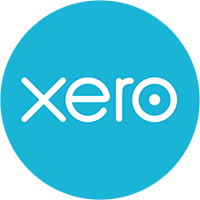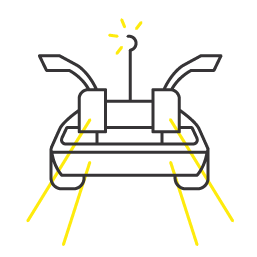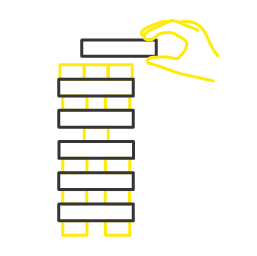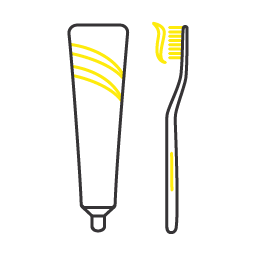With things changing daily [if not hourly] we will be updating this blog as new information becomes available [so save the link for future reference].
There’s a multitude of information available to at the moment around the different stimulus/support packages from the Government.
One very key initiative within the Government package is the JobKeeper Payments.
For all the other information from the Federal and State Governments, banks assistance and other general business advice specific to COVID19, visit our main COVID updates blog here.
JobKeeper Payments
Think of this payment as a subsidy to the employer from the Government to continue paying their employees.
Each eligible employee receives at least $1,500 per fortnight [before tax]. If they were already being paid more than this amount from the employer then their income will not change although we understand they will still be eligible for these payments if hours are reduced as long as the employee is still paid the $1,500 as a minimum. If they were receiving less than this amount, the employer will top up the amount paid to them to the $1,500 [before tax] per fortnight. Notably, the employer does not need to pay superannuation any any ‘top-up’ amount to get the employee to the $1,500 payment.
This is effective from 30 March 2020 and is for a maximum period of 6 months. Employers will be reimbursed back to 30 March 2020 if the employees are still employed at that point.
Eligible Employers
To be eligible employers, businesses must;
- have turnover of less than $1billion [which is pretty much anyone reading this blog]; and
- have experienced a drop in income of 30 per cent; and
- must have had eligible employees as at 1 March 2020; and
- confirm that each eligible employee is still engaged by the business.
Not-for-profits [including charities] are also eligible for the payments and specifically, ACNC registered charities are only required to show a 15% drop in income.
Self-employed individuals and entities may also be eligible for the JobKeeper Payments but the legislation limits it to 1 payment for those in partnerships, trusts and companies [that do not pay themselves wages]. That is, if a mum and dad businesses with both actively working in the business, they will only be eligible for one JobKeeper Payment, not one each.
Employers would need to register their intention to apply via the ATO website … here is the link to start the process. You will need to register again because this is simple to register your interest and to stay up-to-date with the related information.
Basic Test – 30% ‘Decline in turnover test’
For most businesses, they will be required to show a 30% decline in ‘projected GST Turnover’ to be an eligible employer. They have also now introduced an additional eligibility group for ACNC registered charities which are only required to show a 15% decline in turnover.
Determining is you meet this test will be based on your ‘projected GST turnover’. This is a term defined in the GST Act at section 188-20 as follows:
188‑20 Projected GST turnover
(1) Your projected GST turnover at a time during a particular month is the sum of the *values of all the supplies that you have made, or are likely to make, during that month and the next 11 months, other than:
(a) supplies that are *input taxed; or
(b) supplies that are not for *consideration (and are not *taxable supplies under section 72‑5); or
(c) supplies that are not made in connection with an *enterprise that you *carry on.
The definition appears to be amended though for the purpose of the JobKeeper payment so the references to a 12 month period are a reference to a month or quarter that you applying the test to.
The use of this definition is how they are making entitlement more future-focused than historically focused.
We therefore summarise how we see the tests applying to the following:
- relevant calendar month ending after 30 March 2020 and before 1 October 2020 versus the same month last year;
- relevant quarter starting on 1 April 2020 or 1 July 2020 versus the same quarter last year; or
- alternative tests the Tax Commissioner sets.
It is useful to understand the data the ATO will use to measure this test. We expect this will be code G1 and G2 on the BAS which is where you disclose your total sales for the period but we also note the requirement for employers to report monthly [within 7 days] their actual turnover.
The ‘decline in turnover test’ needs to be applied per entity rather than on a group basis so you may have one entity eligible within a group while another entity in the group is ineligible or if the group as a whole may be ineligible. Likewise, you may meet the test for one division in your entity but not the other – unfortunately it is the total of both divisions that is relevant and it does not matter if only one division meets the test [the entity as a whole needs to meet the decline in turnover test].
The ATO has also been given the authority to use alternative tests or apply their discretion when the tests are not appropriate. This is important for new businesses, businesses that grew significantly during the year, businesses where 2019 was not normal [such as in drought conditions], businesses acquired during the year or those that have been restructured during the year.
The ATO will only provide alternative tests for a class of taxpayers rather than provide discretion on individual situations.
Given this is a projected turnover test, the ATO will be given the ability to recover overpaid amounts for ineligible employers although it has previously been suggested that ‘some tolerance’ will be exercised if a business expects income to drop by 30% but the actual drop is ‘slightly smaller’. This is also a positive sign as it shows they are not intending to apply a ‘hard fast’ rule-based test.
Alternative Tests
The ATO has now set out the alternative tests that they will make available when the basic test is not satisfied. Importantly, the alternative tests are all about a situation when there is not an appropriate relevant comparison period.
There are 7 circumstances where the alternative tests will apply:
- New businesses commenced during the comparison period
- Businesses acquired or disposed of during the comparison period
- The business was restructured during the comparison period
- A business experiencing substantial growth in turnover during the comparison period
- Businesses affected by drought or natural disaster
- Businesses with irregular turnover
- Sole traders or small partnerships with sickness, injury or leave
The tests work to allow you to use a different comparison period than the same period in the previous year [as would normally be required by the basic test].
We have summarised at a high level the conditions to use either of these alternative tests and the alternative comparative period turnover you can use. Please note that we have only summarised at a high level to help you understand the general intention of the tests. If you need to rely on the alternative tests, we suggest reaching out to the team at businessDEPOT to help.
New businesses
Application: This test will be applicable when business was commenced before 1 March 2020 and after the relevant comparison period. For example, if you are applying the test to the April-June 2020 quarter, this test would apply if you started business after 30 June 2019.
Replacement Comparison Turnover: In most situations, the replacement comparison turnover will be the average turnover for each whole month since commencing business. There is also an option to only use the average the previous 3 months of trading [assuming you have traded for at least 3 full months]. If you commenced business after 31 January 2020, the replacement comparison will be based on the February 2020 turnover divided by number of days of trading pro-rated for the full month [notably 29 days in Feb 2020].
Businesses acquired or disposed
Application: This test will apply when there was an acquisition or disposal of part of their business after the relevant comparison period and before the applicable test period, and the acquisition or disposal changed the entity’s turnover. For example, this test would apply if when you are testing the month of April 2020, you would need to have acquired the business after 30 April 2019.
Replacement Comparison Turnover: In most situations, the replacement comparison turnover will be turnover for the month or quarter [depending on your test period] following the last acquisition or disposal. Therefore, if you disposed of part of your business in December 2019, and you were testing turnover in April 2020, you would use the turnover for January 2020.
Business Restructured
Application: This test will apply when there was a restructure of your business [or part thereof] after the relevant comparison period and before the applicable test period, and the restructure changed the entity’s turnover. For example, this test would apply if when you are testing the month of April 2020, you would need to have restructured after 30 April 2019.
Replacement Comparison Turnover: In most situations, the replacement comparison turnover will be the average turnover since the restructure [starting with the first month following the month of restructure]. Therefore, if you restructured part of your business in December 2019, and you were testing turnover in April 2020, you would use the average of turnover from January to March 2020.
Substantial Growth Business
Application: This alternative test will apply in 3 situations:
- turnover has increased by 50% or more in the last 12 months [prior to the test period]
- turnover has increased by 25% or more in the last 6 months [prior to the test period]
- turnover has increased by 12.5% or more in the last 3 months [prior to the test period]
Replacement Comparison Turnover: You can utilise turnover from the 3 months prior to the test period [divided by 3 if you are testing against a month rather than a quarter].
Businesses affected by drought or natural disaster
Application: The only conditions for this alternative test is that the entity conducted business in a declared drought zone, or natural disaster zone during the relevant comparison period, and it changed the entity’s turnover.
Replacement Comparison Turnover: The turnover from the same period in the year immediately before the declaration of drought or natural disaster was made.
Businesses with irregular turnover
Application: These conditions look at the actual results on a quarterly basis for the 12 months immediately before the applicable test period and require the lowest turnover quarter to be no more than 50% of the highest turnover quarter. It is also required that the turnover is not ‘cyclical’.
Replacement Comparison Turnover: 12 month average turnover for each whole month immediately before the applicable test period.
Sole traders or small partnerships with sickness, injury or leave
Application: This is applicable if the entity is a sole trader or small partnership that has no employees, had the sole trader or at least one of the partners not work for all or part of the relevant comparison period due to sickness, injury or leave, and the turnover was affected as a result of it.
Replacement Comparison Turnover: Use the turnover for the month immediately after the period in which the sole trader or partner returned to work [multiplied by 3 if the comparison period if a quarter].
If you would like more detail, please do not hesitate to reach out to our team or review further information on the ATO website.
Service Entities
The ATO has now also released how you can apply the decline in turnover tests when your entity is operating as part of a group. Typically these rules will apply to extend the JobKeeper Payments to ‘service entities’ that employ team members and on-charge their cost by way of a service fee to other entities within the group.
These modified rules will essentially apply if:
- the employing entity is a member of a consolidated group, a consolidatable group or a GST Group; and
- the principal activity of the entity is to supply other group members with services [which basically represent the work individuals do that are employed by the entity]; and
- the Tax Commissioner has not made a determination saying that the entity cannot apply these modified rules.
A consolidated group is one that is a 100% owned group – typically structured with a head company owning the shares in the other entities of the group. A GST Group, on the other hand, is a defined term within the GST Act which introduces a concept of being ‘90% owned’ but is a defined term that needs to be satisfied to be able to apply these modified rules.
Interestingly, because of the above definitions, the modified rules to look at the decline in turnover on a group basis are very limited and seem to only apply in a very traditional ‘service entity’ structure. For example, we do not see these modified rules applying when one entity employs all of the staff, provides some services externally [ie their principal activity is not just as a service entity], but on-charges the cost of the staff via a service fee or management fee.
The modified rules, if you are eligible, simply have the effect of looking through the structure to the services provided externally to assess a 30% drop.
If you have wages in one entity different to the entity experiencing a 30% decline in turnover, these eligibility requirements would need to be looked at very closely before you can try and apply them.
Eligible Employees
Eligible employees are employees who;
- are currently employed, stood down or re-hired by the eligible employer; and
- were employed as at 1 March 2020; and
- are full-time, part-time or long-term casuals; and
- are at least 16 years of age; and
- are an Australian citizen or holder of a permanent visa or certain other specific visa holders; and
- are not in receipt of a JobKeeper Payment from another employer.
Long-term casual is considered to be someone employed for longer than 12 months as of 1 March 2020.
Employees who receive a JobKeeper Payment need to note that it may affect other entitlements from the Government.
Process & Reporting
For our step-by-step guide to registering and reporting for JobKeeper … please see our detail processes blog.
Key Dates are summarised as follows:
- 8 May 2020 = Date you need to have paid the minimum amount to all eligible employees [this has been extended from 30 April]
- 31 May 2020 = Enrol for JobKeeper with ATO to qualify for the initial fortnights of JobKeeper but you can enrol for later months at a later date [this has been extended from 30 April]
Employers are assuming a lot of the responsibility for the administration of the JobKeeper Payments. In particular, we note the following:
- We know that employers are required to register their interest in applying for JobKeeper payments via the ATO website.
- Payments will be made to the employers with the first payment to be expected in the first week of May.
- Employers need to identify and report eligible employees on a monthly basis to the ATO.
- Employers are required to report on income on a monthly basis.
- Employers must ensure the eligible employees are paid the minimum $1,500 per fortnight [before tax].
The ATO is responsible for administering the payments and we are anticipating the ATO will soon release more information on the processes around the significant reporting obligations. We understand if the employer has outstanding ATO debts they will not use the JobKeeper payments to offset old debts.
The first payment is expected to be received by employers from the ATO within 14 days of month-end although they have previously talked about the first payment being in the first week of May.
Payment to your employees is required before you will be entitled to receive the JobKeeper Payments from the Government. This we expect to be administered through the Single Touch Payroll system.
Employees are required to notify their employer in writing that they met the eligibility requirements as at 1 March 2020.
Employers are required to inform the ATO which employees are eligible for the JobKeeper Payment on a fortnightly basis. Obviously, it was not possible to do this during the first fortnight from 30 March so the first 2 fortnights are required to be paid by 8 May 2020 [extended from the original date of 30 April 2020]. The employer must also advise the employees they have applied for JobKeeper Payments for them.
Single Touch Payroll [STP] will be important to meet your reporting obligations but paper forms are also expected to be available.
Self-employed businesses without employees
Self-employed businesses without employees are eligible to nominate one ‘individual’ to receive the JobKeeper Payment. They should still register using the same link on the ATO website and provide the ABN for the business and TFN for the individual.
Information on the business.gov.au website states the following:
“The intent of the JobKeeper Payment is to enable any eligible self-employed person get a wage subsidy regardless of what business structure they use, where:
- the partners in a partnership only receive a share of profits – one partner can be nominated to receive it
- directors of a company only receive dividends – one direct can be nominated to receive it
- beneficiaries of a trust only receive distributions – one individual beneficiary (i.e. not a corporate beneficiary) can be nominated to receive it”
It is now understood that JobKeeper payments paid for a self-employed person in a trust, partnership or company, are income of that entity and do not need to be paid to the individual person the payments are linked to.
Compliance Guidelines
The ATO has released their Practical Compliance Guidelines PCG 2020/4 which sets out how they will apply their resources for compliance and audit activities. This gives everyone an idea of the type of activity they will focus on around accessing JobKeeper Payments which is very important given the self-assessment nature of the package. Key items to note from these guidelines include:
- They will target activity that accesses and/or increases their entitlements.
- It is likely they will overlay industry considerations [ie is your industry likely to have been significantly affected].
- Will be driven by the substance of the outcome achieved more than the type of arrangement entered into.
- The Commission will have regard to a range of factors including:
- the manner in which it occurred
- the form and substance
- the time entered
- the result
- change in the financial position that resulted
- other consequences to you or a connected entity [eg does it have an income tax consequence]
- nature of connection between parties
- Specific examples that will be targeted include:
- deferring income or the supply of services/goods
- bringing forward income or the supply of services/goods
- the transfer of assets without any decline in external revenue
- employer entities that reduce a service fee
- parent company that reduces a management fee
- manipulation of timing of a management fee
You can review the guidelines and specific examples on the ATO website at ato.gov.au.
With recent upgrades and digitalisation of the ATO, they are well positioned to interrogate the data and identify abnormalities … so be warned!
18 April 2020 Update
Late on Friday, 17th April, some great additional information was released by the ATO on how they intend to test for the 30% decline in turnover. We summarise this additional information and further information clarified during the week as follows:
- Alternative Tests: The basic test is a comparison of 2020 projected or actual results to 2019 figures. It looks like the ATO will be releasing alternative tests where there “is not an appropriate relevant comparison period”. The ATO information specifically notes the following examples:
- 2019 results impacted by drought
- recently commenced a new business
- an entity that has gone through major structural business changes
- To qualify from the beginning: To qualify for the JobKeeper Payments for April you will need to satisfy the decline in turnover test for either the month of March [which would be actual results], the month of April or quarter ending 30 June which will be at least partly ‘projected’ results.
- Qualification at a later time: If you do not meet the requirement in March or April you can qualify at a later time but “you will only be eligible for JobKeeper Payments for Jobkeeper fortnights that end on or after your turnover test period starts”. For example, if you do not qualify in April but you do in May, the first Jobkeeper fortnight that you can receive JobKeeper payments for is the fortnight starting 27th April and ending 10th May [because that is the first fortnight ending in the relevant qualification month].
- Compare apples with apples: It is important that in comparing your actual or projected results for 2020 that you are comparing ‘like with like’. That is, you must apply the same methodology to determine turnover in both periods. We are being asked lots of questions around what to include or exclude from their calculations, it is important to make sure you are calculating the amounts consistently.
- What’s in and what’s out of turnover: It is clear that you need to include in your calculations all GST taxable supplies and GST-Free supplies [such as for medical services] but there are a few things that are now clearly excluded. Some of the things to exclude from your turnover calculations:
OUT = Input-taxed supplies for GST purposes [eg interest income, share sales and residential rental income]
OUT = The GST you charge your customers
OUT = Sales not connected to carrying on your enterprise [eg selling a private car]
OUT = Gifts and donations [unless you are a gift-deductible recipient]
OUT = Sales not connected with Australia [eg those made through a business carried on outside Australia]
OUT = Amount received as a JobKeeper payment
OUT = Supplies that are made by transfer of capital assets
- Turnover by entity [not group or entity]: It is important to emphasise that the turnover is an entity test, not a group or division test. You do not need to take a consolidated view if you have multiple entities within your group and you only need to apply the test at the entity level. Likewise, you may meet the test for one division in your entity but not the other – unfortunately, it is the total of both divisions that’s relevant and it does not matter if only one division meets the test [the entity as a whole needs to meet the test].
- Cash or Accrual: If you lodge your BAS’s on a cash basis you can choose to undertake your calculations on a cash basis as long as this is applied consistently in both 2020 and 2019. The cash basis often may produce an abnormal result though because the timing of receipts is not related to the activity during the month. Therefore, even if you lodge your BAS on a cash basis, you can calculate your decline in turnover on an accruals basis.
- Self-employed Payments: It is now understood that JobKeeper payments paid for a self-employed person to a trust, partnership or company, are income of that entity and do not need to be paid to the individual person the payments are linked to.
- If you are in, you are in: You only need to meet the decline in turnover test once. Whenever you meet the test, you will then be eligible all the way to 30 September provided you meet the other requirements like remaining in operation and continuing to employ the employees. What we don’t understand is how the ATO will use the monthly income figures that need to be reported – even if it shows growth in turnover again.
The things we still don’t know
We are starting to get a lot more clarity now on the package but there are a couple of things we still don’t know including:
- How ATO will recover from employers who expected to be eligible but then do not meet the 30% decline in turnover test?
- Error tolerance if actual results end up not meeting a 30% drop.
- How employers would be able to undo terminations already made [including payouts of leave]?
- How employees would be treated if re-hired after applying for JobSeeker payments?
- How some businesses are going to be able to pay these amounts well in advance of receiving the credit from the Government?
The Detail
For more information [even though this is not the legislation] please see the follow:
https://www.ato.gov.au/General/JobKeeper-Payment/
https://treasury.gov.au/sites/default/files/2020-04/Fact_sheet_Info_for_Employers_2.pdf
For all the other information from the Federal and State Governments support packages, banks assistance and other general business advice specific to COVID19, click below:

























































